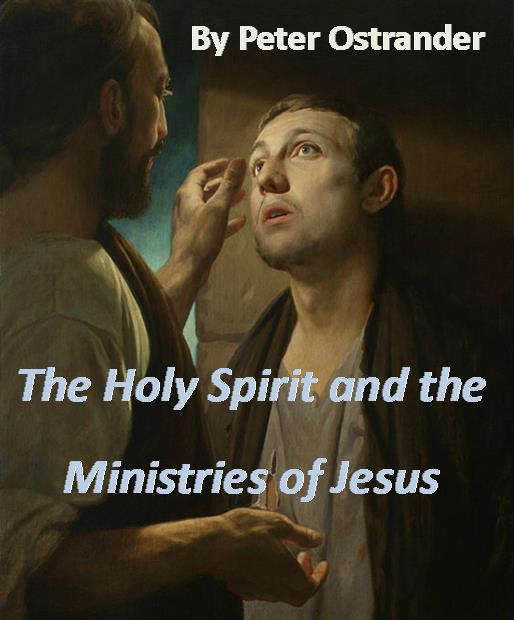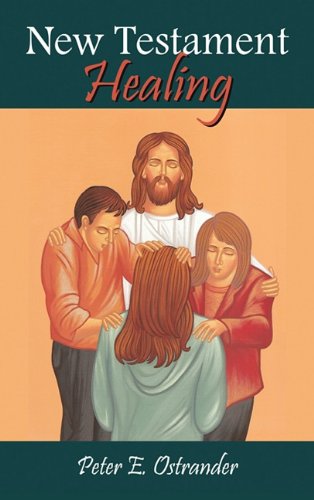The Holy Spirit and the Ministries of Jesus
Part 1 of an excerpt from Peter Ostrander’s book, New Testament Healing.

The Holy Spirit and the Ministries of Jesus
When Jesus spoke and acted with authority and with God’s power to heal the sick and disabled, he set people free from demonic oppression, then rebuked and stilled the storm on the Sea of Galilee. Were these mighty works primarily related to his divine nature as the Son of God, or to the person and power of the Holy Spirit? When Jesus humbled himself to be born of a virgin, he took on the form of a servant and became obedient to death (Phil. 2:5–11), even death on the cross for our sins. Had he laid aside the abilities that had already been his from the creation? I do not believe that he ceased to be the divine Son of God. I believe that his healing ministry was performed in such a way that Spirit-filled, empowered Christians, forming the Body of Christ, might do similar or even greater works, after Jesus’ resurrection and ascension. Let’s explore the role of the Holy Spirit in the Gospels, book of Acts, and the Epistles.

This article is the first half of chapter 3, “The Holy Spirit and the Ministry of Jesus and His Disciples” from New Testament Healing by Peter E. Ostrander.
In our world of advanced western medicine, complementary or alternate therapies, twelve-step groups, and self-help programs, many people have sought to maintain or improve their health in this life Have you considered another possibility: Christian healing ministry according to the patterns found in the New Testament? If you read the Gospel according to Mark, about 32% of this wonderful narrative up to Jesus’ final week upon earth, is about healing and miracles! Jesus and his first disciples were quite successful. How did they heal the sick? Would a contemporary expression of this ministry be of interest to you? As the good news about Jesus is preached and ordinary Christians pray and minister, people have been healed physically, emotionally, and spiritually, then experience abundant life with Jesus Christ. This book will help you learn more about Christian healing, encourage you to receive ministry, and prepare you to reach out to others.
Purchase New Testament Healing by Peter Ostrander
In chapter 1, we considered several explanations for why Jesus of Nazareth engaged in a healing and deliverance ministry. There are also significant Hebrew Scriptures, primarily in Isaiah, that relate the personality and ministry of the coming anointed one to the work of the Spirit of God in his life. When, through Isaiah, the threatened king Ahaz of Judah is given an opportunity to ask the Lord for a sign, whether it should come up from the depths or down from the heights, Jesus refuses to provide a sign but Isaiah is given one anyway: “The virgin will be with child and will give birth to a son, and you will call him Immanuel, meaning ‘God with us’” (Isa. 7:14). The prophet then speaks of darkness in the land of Zebulun and Naphtali being replaced by God’s light after heavy burdens are broken off: “For to us a child is born, to us a child is given and the government will be on his shoulders. And he will be called Wonderful Counselor, Mighty God, Everlasting Father, Prince of Peace” (Isa. 9:6–7). His just and righteous kingdom will continue forever. These epithets pointing to the divinity of the coming King were not commonly used in Israel. These words are followed by a prophecy that a shoot and branch would come up from the cut-off stump of Jesse’s tree. This indicates a return of the Davidic dynasty, which seemingly ended forever during the Babylonian exile that began around 587 B.C. This new ruler would bear fruit because the sevenfold Spirit of the Lord, of Yahweh, would rest on him. The Spirit would give him wisdom, understanding, counsel, power, knowledge, and reverence for the Lord, who is his delight (Isa. 11:1–3). After the wicked are slain by the “rod of his mouth” the peaceable, safe kingdom will finally break out on the Earth. This will occur as the knowledge of God becomes universal and all the Jewish exiles are restored to their land, along with many others who are attracted by the glory of God.
It was in fact normal for leaders in Israel—kings, priests, and prophets—to not only be anointed outwardly by special preparations of olive oil with spices but also by the Holy Spirit of God. When Moses, exhausted by the burden of the people (which numbered over 500,000), complains to God, the Lord has him bring together seventy elders so that the Spirit that is on Moses can also be on them. When the Spirit comes upon sixty-eight punctual elders and two tardy elders in the camp, they prophesy. When a young man protests about the two individuals, Moses says that he wishes that all of the Lord’s people would be prophets because the Spirit of God rests on them (Num. 11:29). These elders wisely deal with the bulk of legal matters and other disputes among the people. Before Moses dies in the wilderness because of his earlier disobedience, he is told to lay his hand on Joshua and commission him as the new leader of Israel. Joshua is filled with the spirit of wisdom (Num. 27:18, Deut. 34:9) and leads God’s people through the Jordan River into the promised land.
Category: Spirit, Winter 2016


